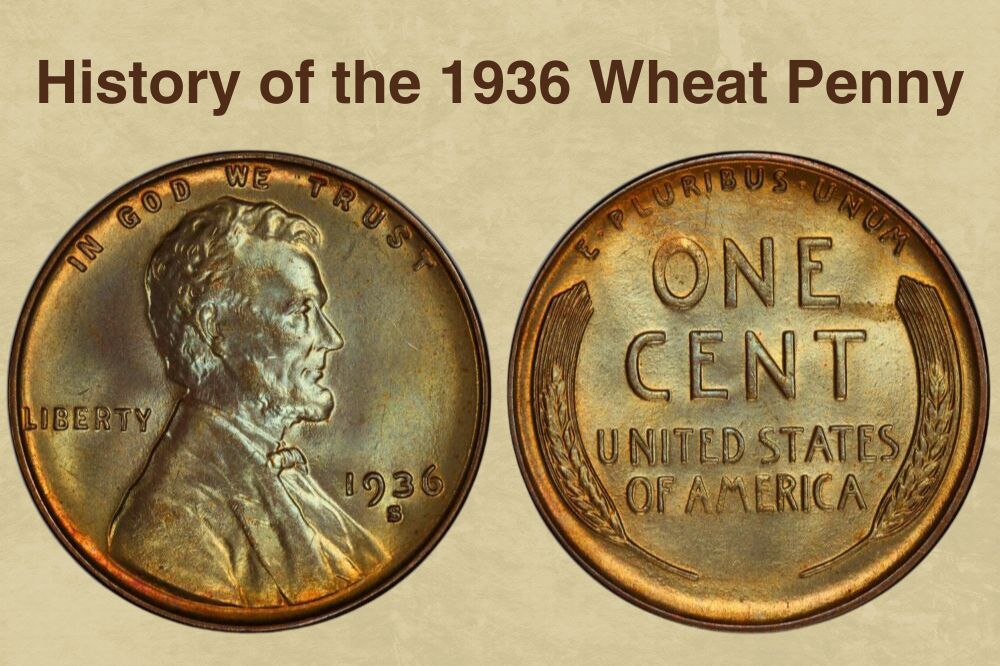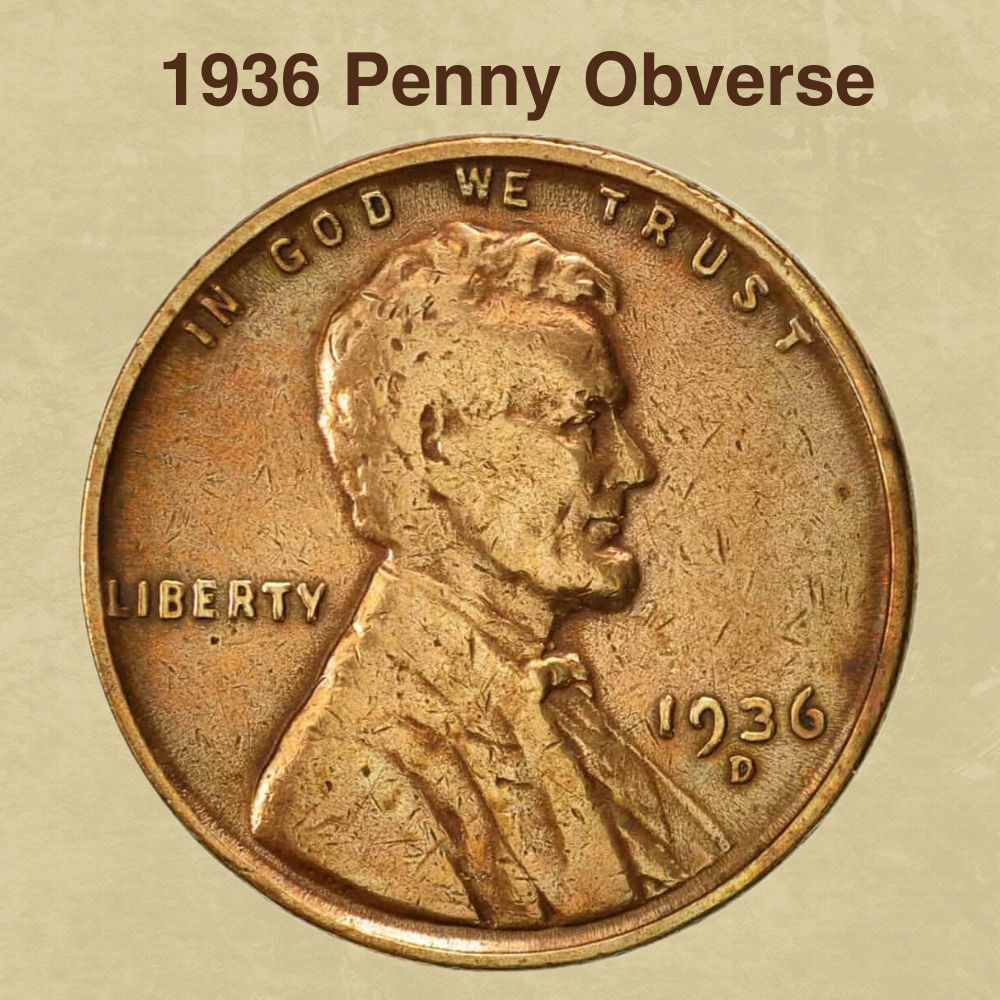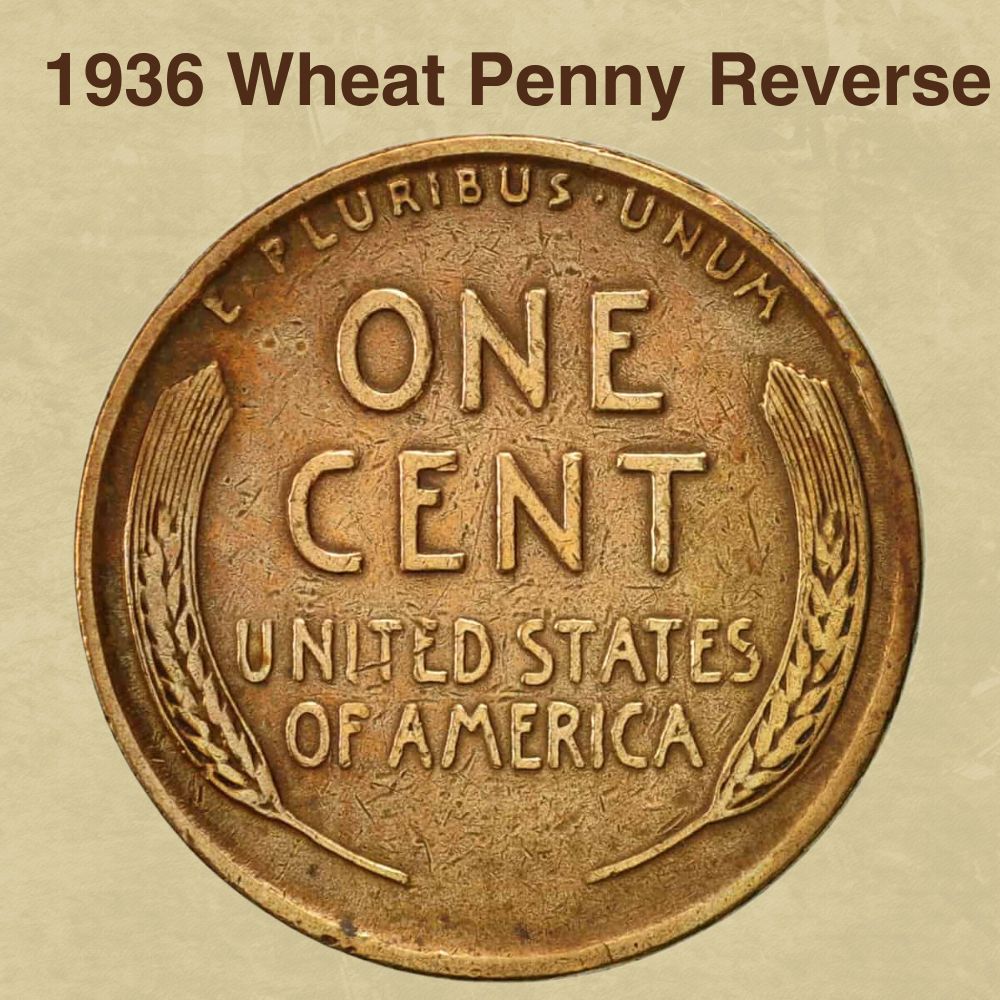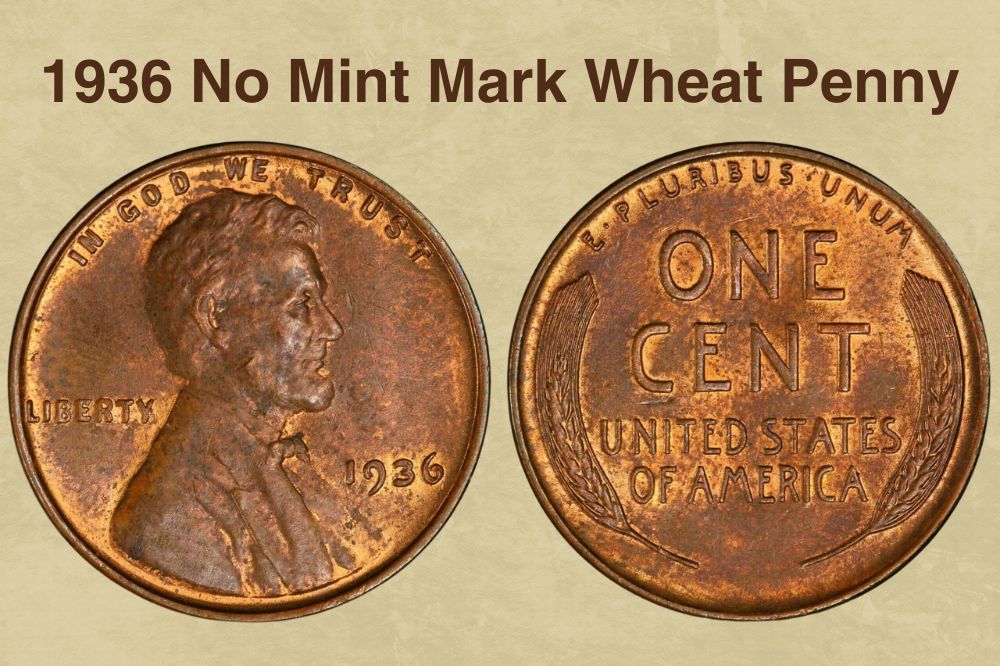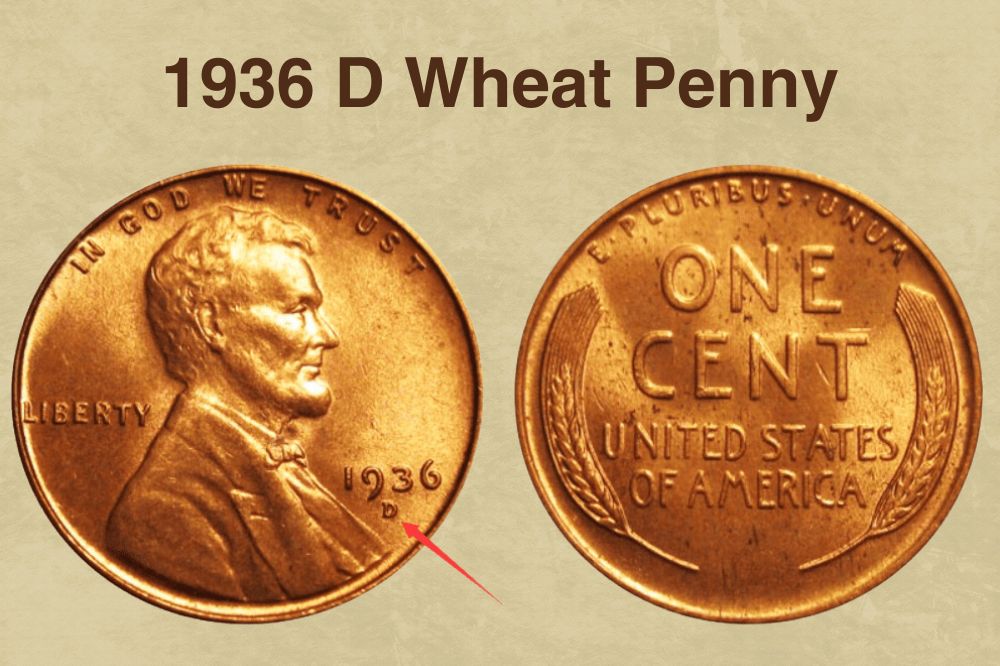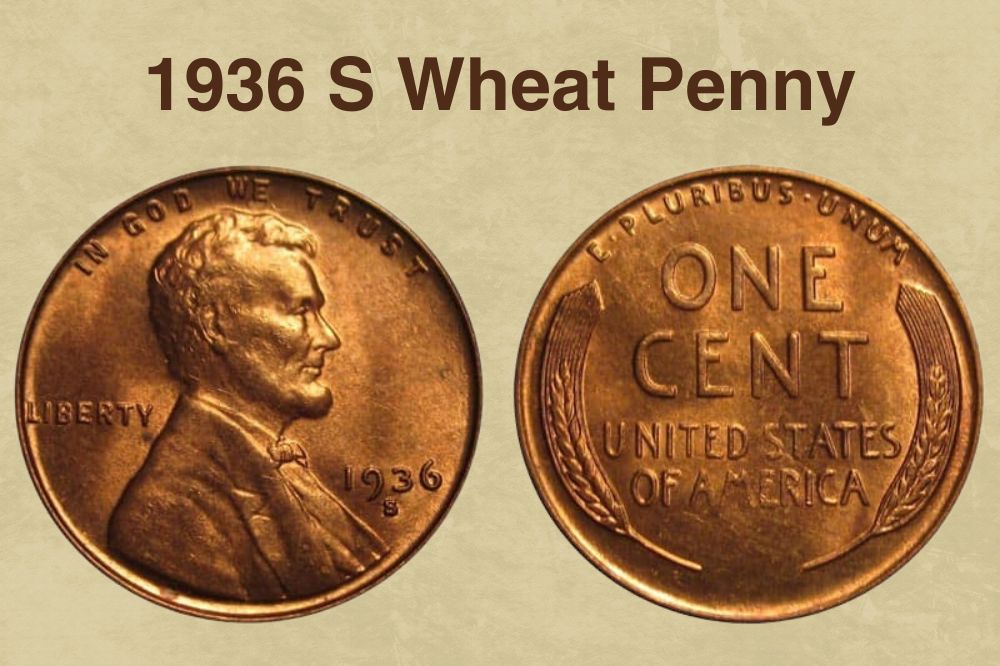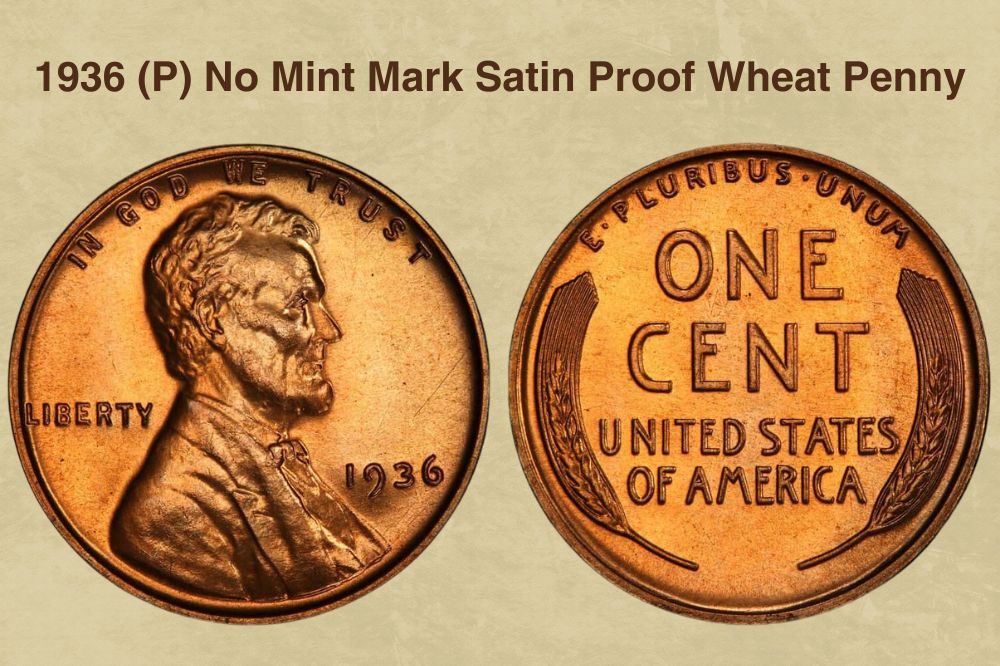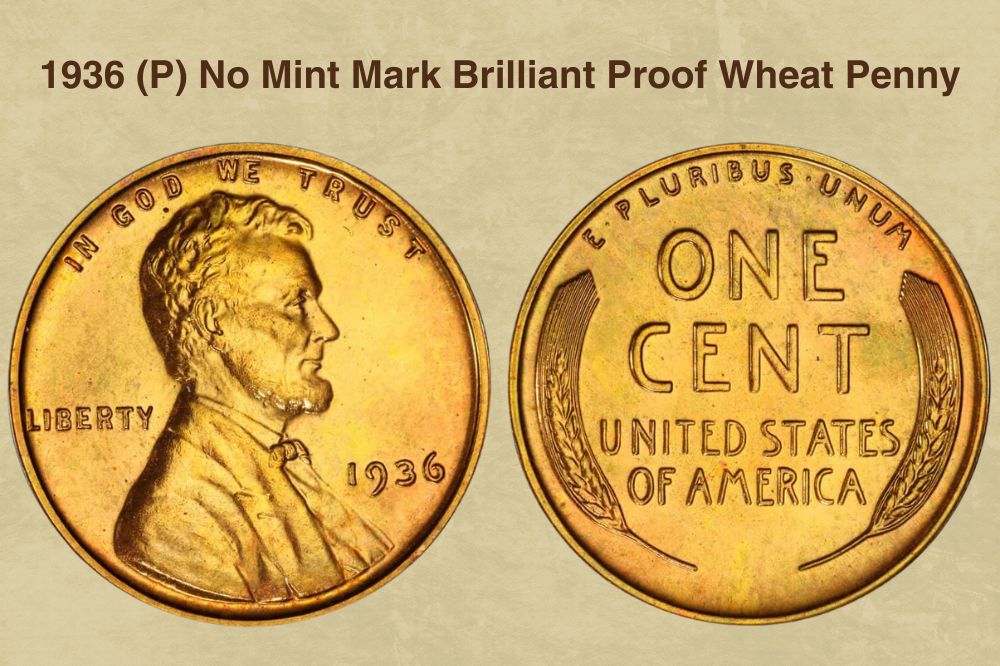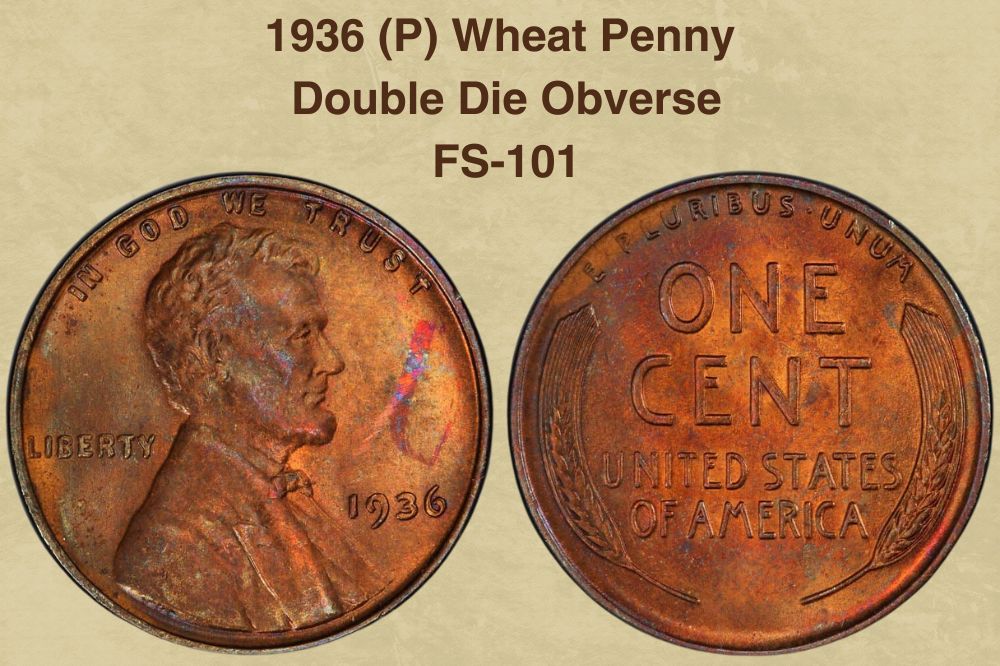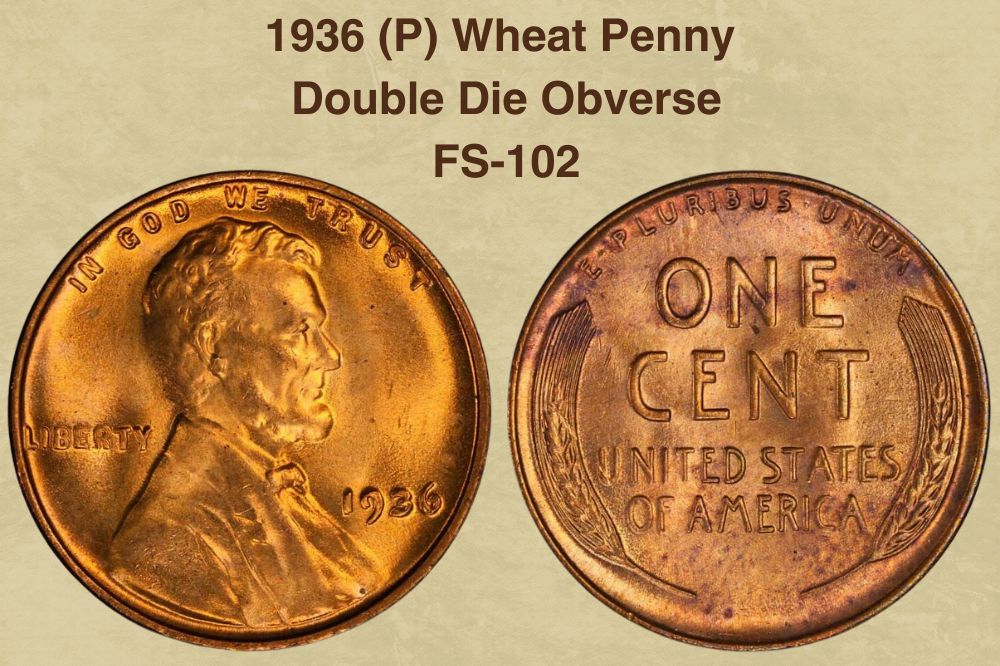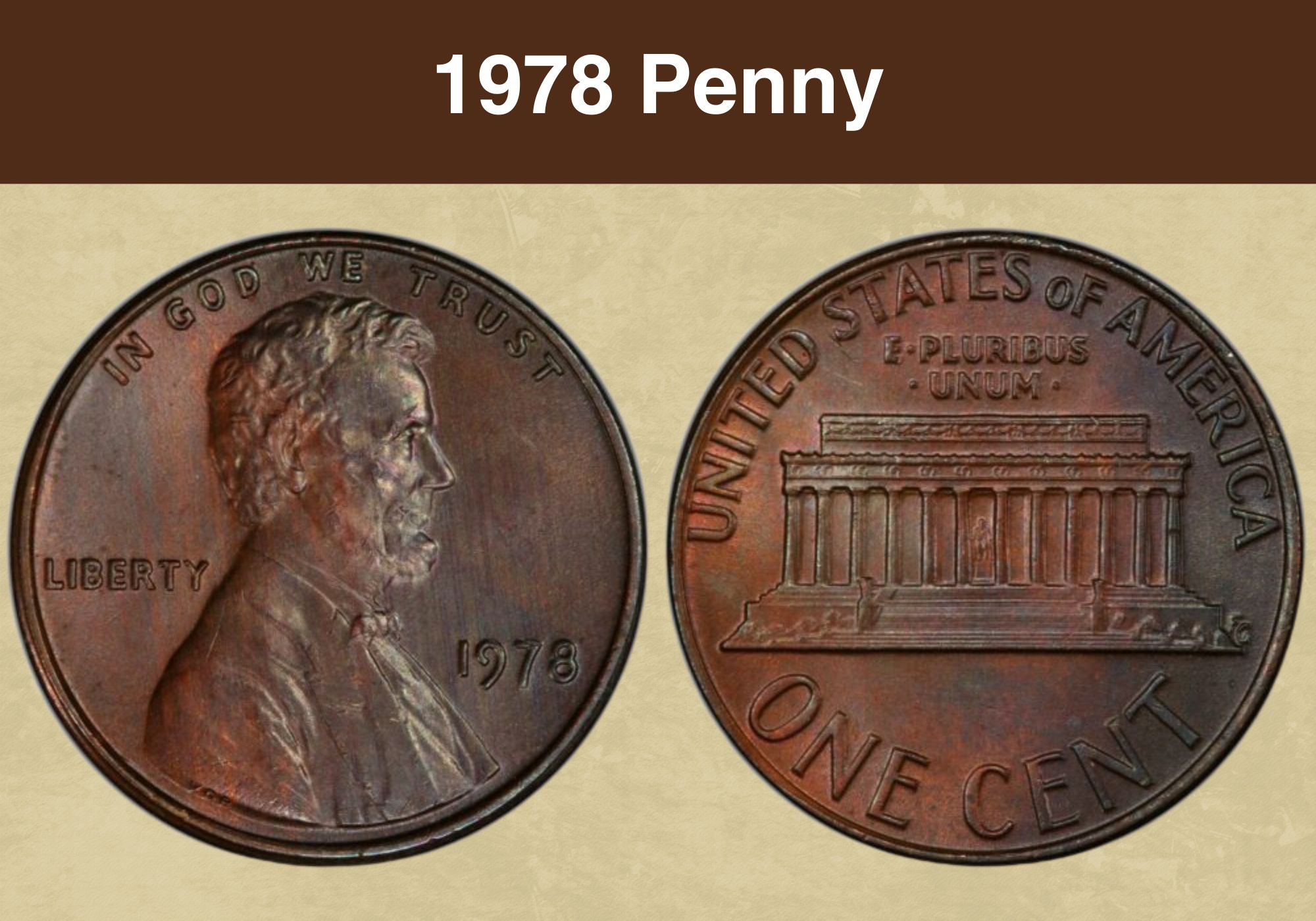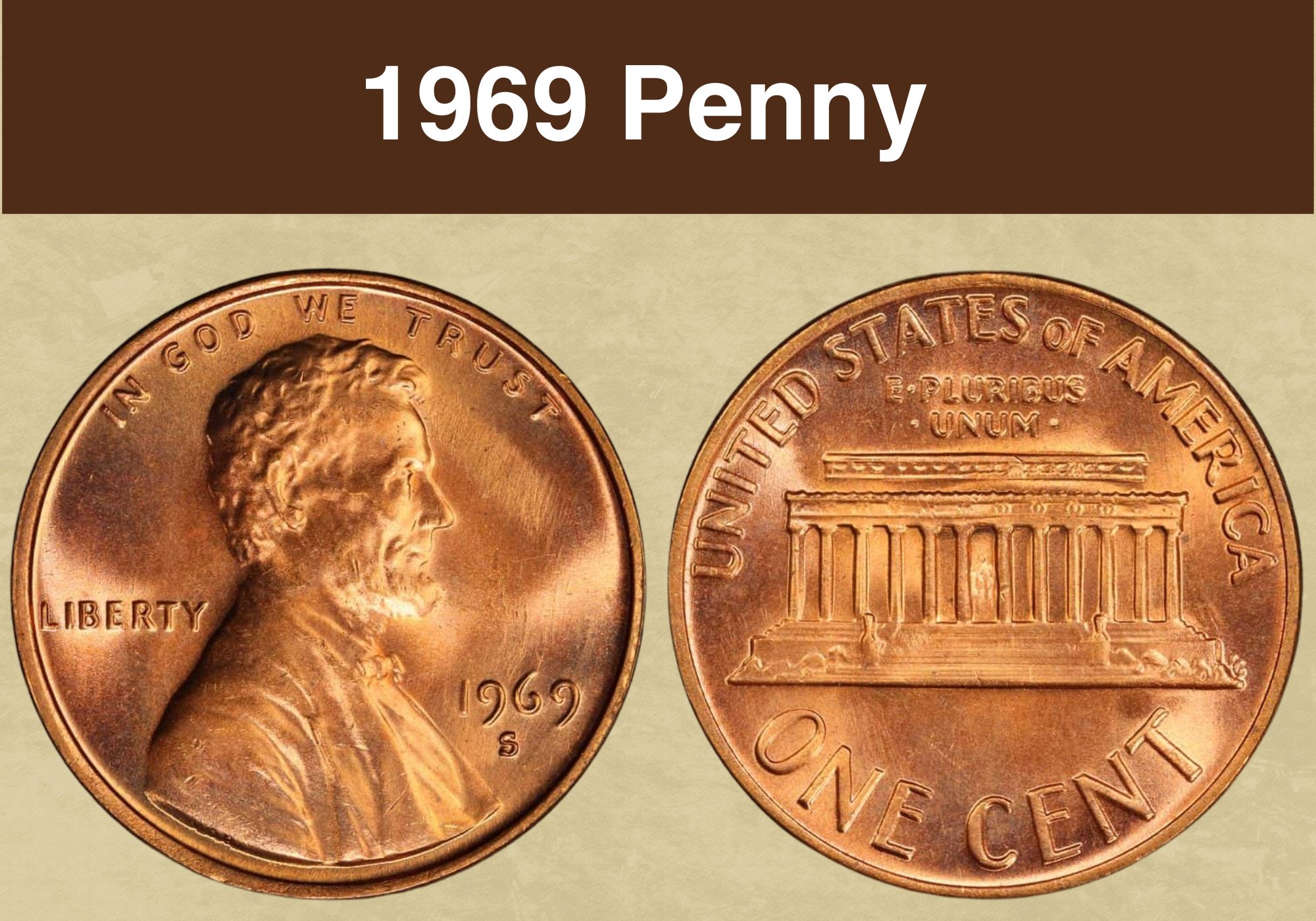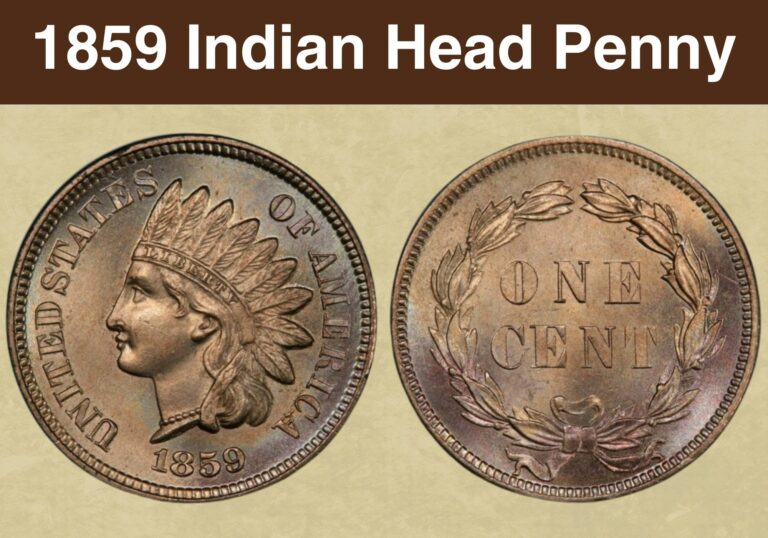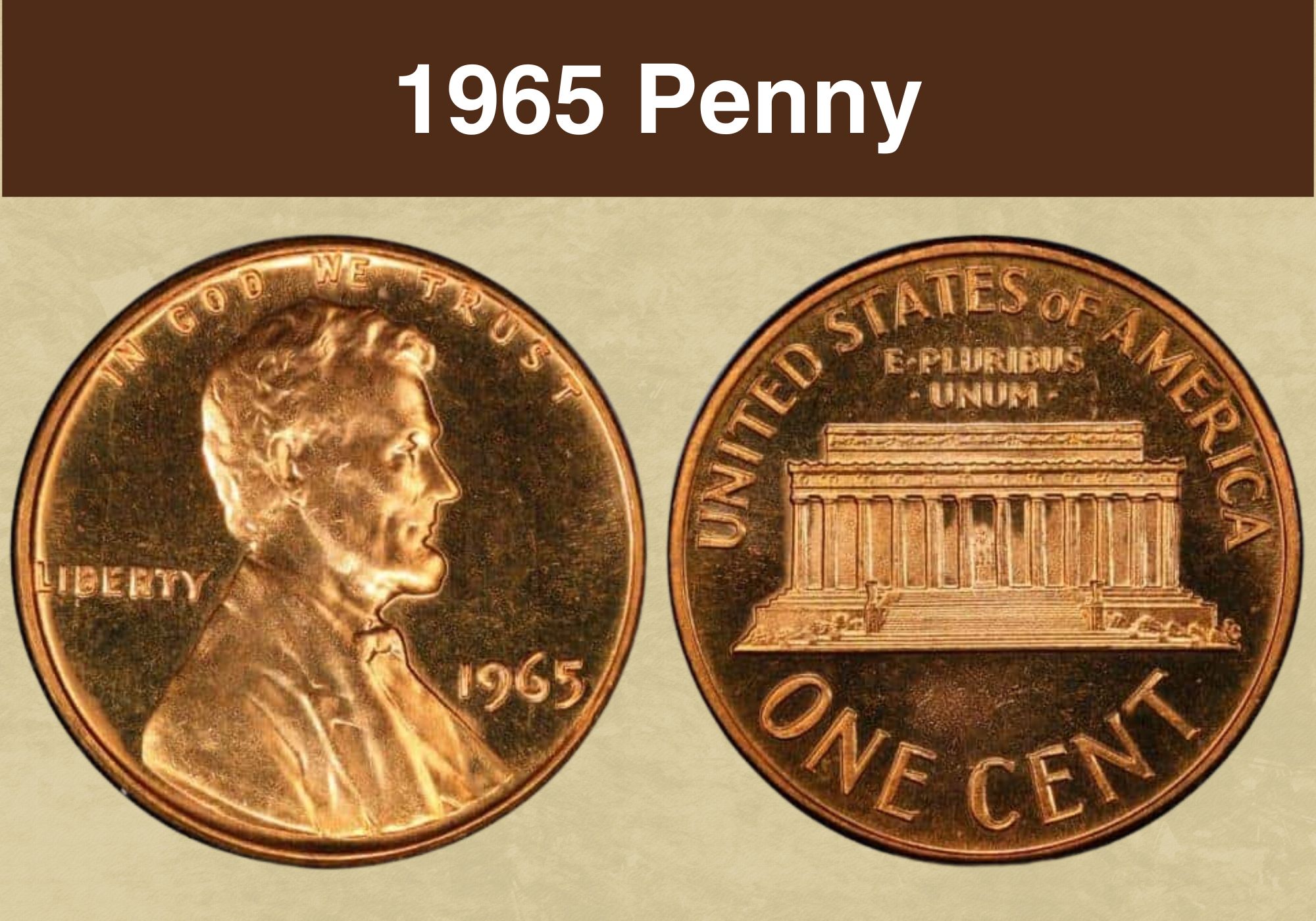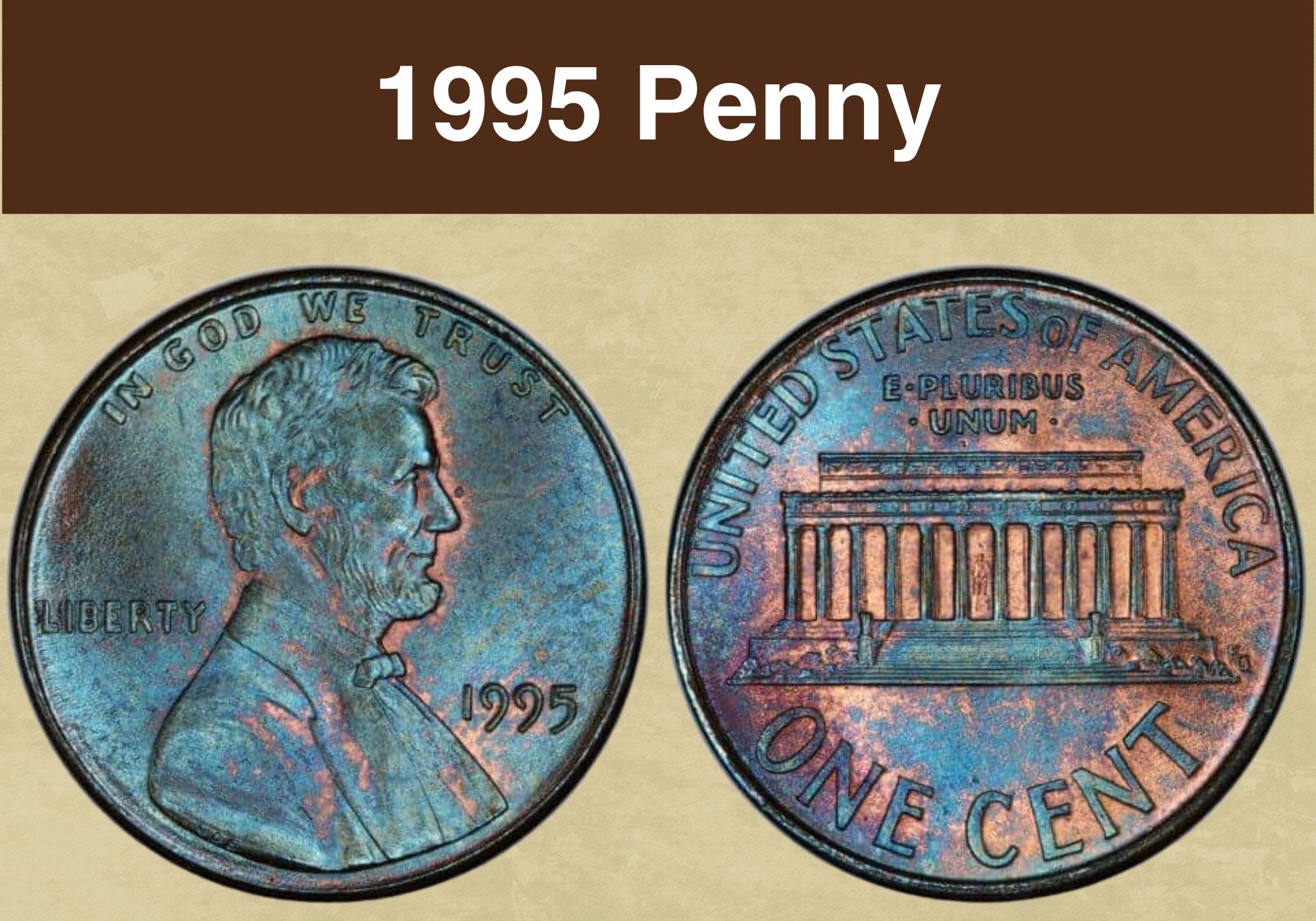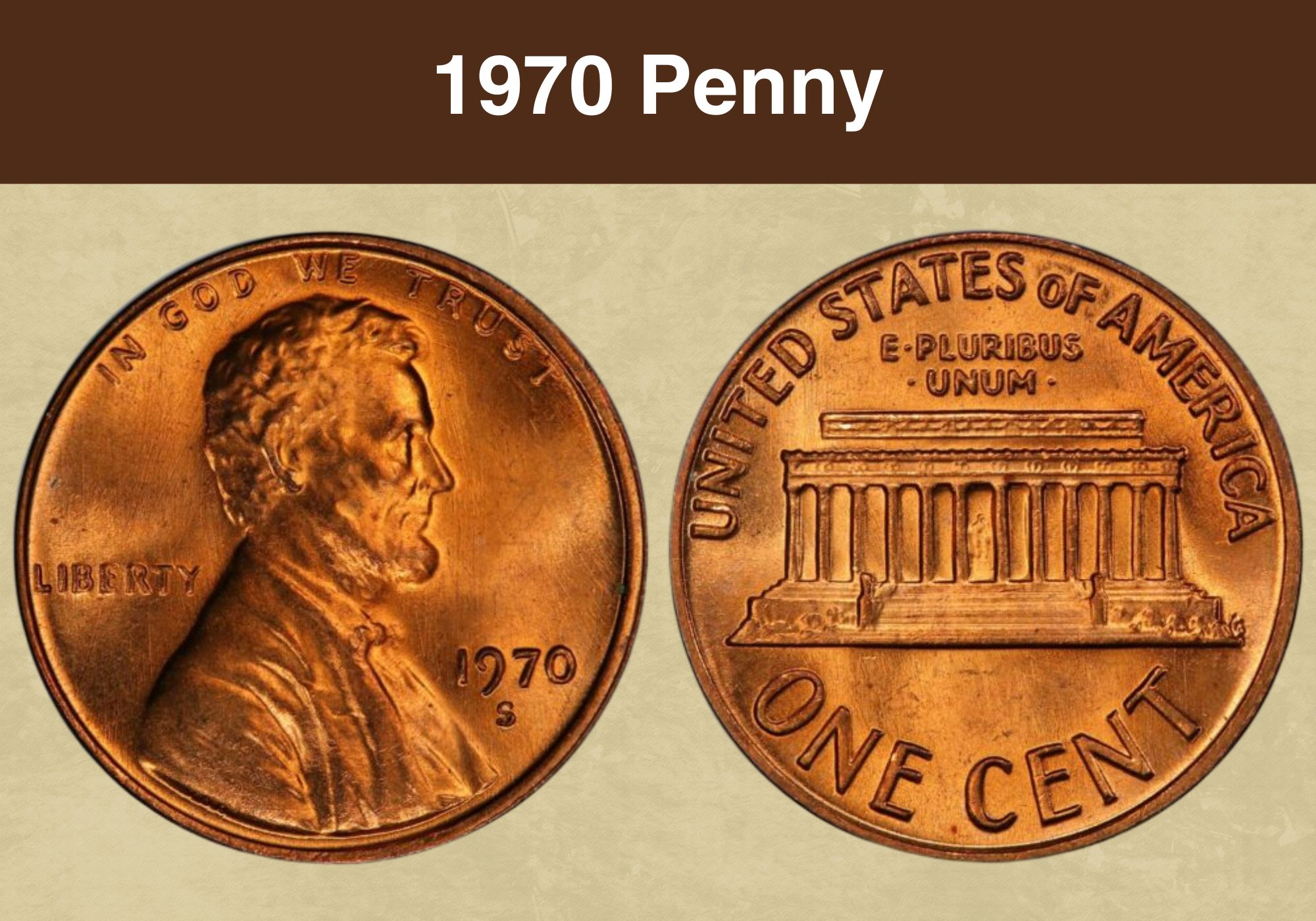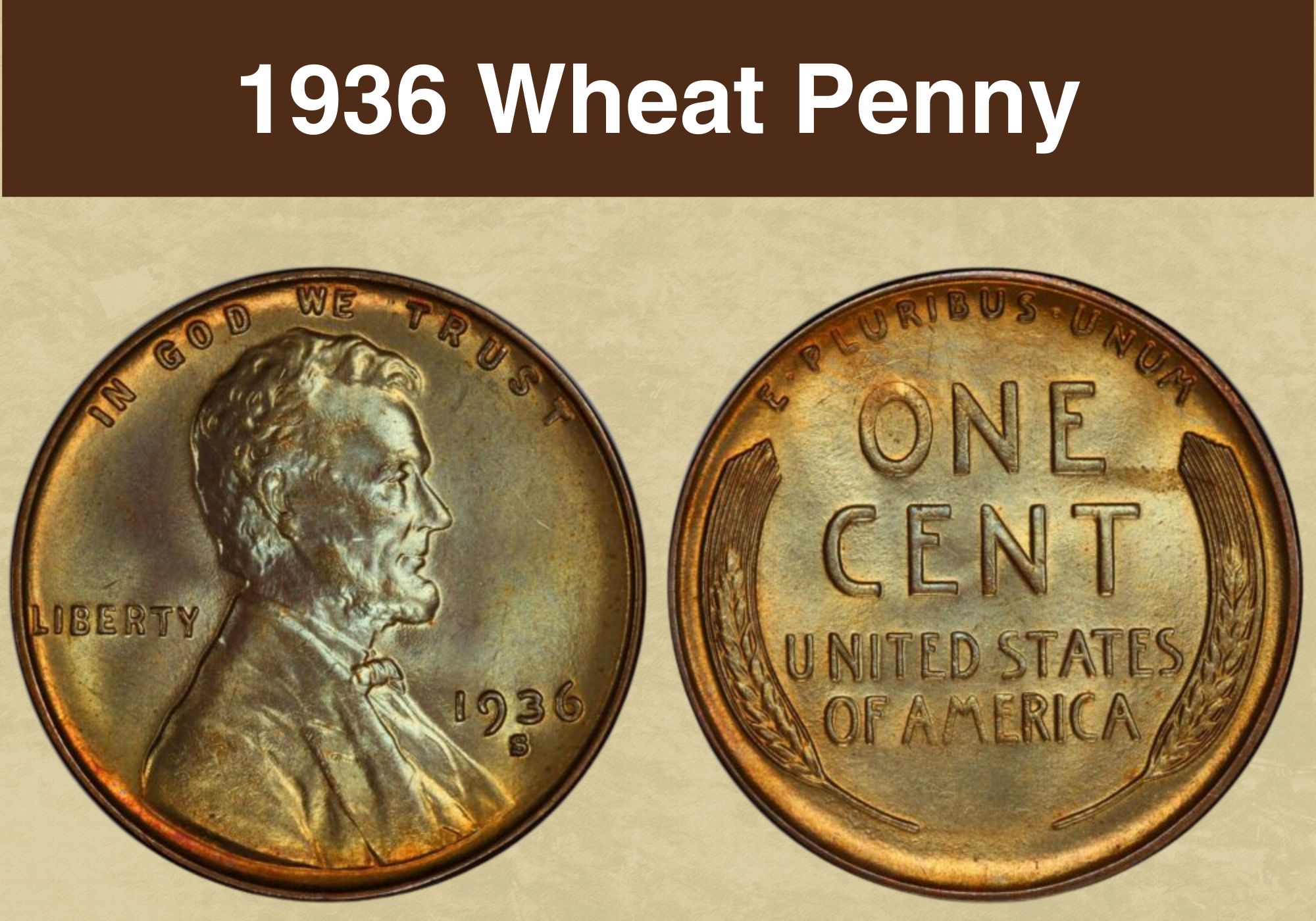
Coin Value Contents Table
- 1936 Wheat Penny Value Chart
- History of the 1936 Wheat Penny
- Features of the 1936 Wheat Penny
- 1936 Penny Grading
- 1936 Wheat Penny Value Guides
- 1936 No Mint Mark Wheat Penny Value
- 1936 D Wheat Penny Value
- 1936 S Wheat Penny Value
- 1936 (P) No Mint Mark Satin Proof Wheat Penny Value
- 1936 (P) No Mint Mark Brilliant Proof Wheat Penny Value
- Rare 1936 Wheat Penny Errors List
- Where to Sell Your 1936 Wheat penny ?
- FAQs
Just how much can an old penny be worth? That’s what we’re to find out!
We’re going to look in detail at the 1936 Wheat penny value. We’ll learn about the coin’s history and how it got its name. And we’ll look at what separates an ordinary 1936 penny from something that collectors are prepared to pay a lot of money to acquire.
Ready to find out more? Then let’s get started!
1936 Wheat Penny Value Chart |
||||
| Mint mark | XF45 | MS60 | MS65 | MS67 |
| 1936 (P) No Mint Mark Penny Value | Brown: $4 | Brown: $4
Red and brown: $5 Red: $7 |
Brown: $8
Red and brown: $22 Red: $28 |
Brown: $65
Red and brown: $110 Red: $260 |
| 1936 D Penny Value | Brown: $5 | Brown: $2
Red and brown: $5 Red: $7 |
Brown: $26
Red and brown: $72 Red: $28 |
Red and brown: $17
Red: $300 |
| 1936 S Penny Value | Brown: $0.25 | Brown: $2
Red and brown: $5 Red: $8 |
Brown: $8
Red and brown: $66 Red: $48 |
Red: $900 |
| PR60 | PR63 | PR65 | PR67 | |
| 1936 (P) No Mint Mark Satin Proof Wheat Penny Value | Brown: $215
Red and brown: $275 Red: $325 |
Brown: $450
Red and brown: $625 Red: $650 |
Brown: $1,300
Red and brown: $1,350 Red: $4,200 |
Brown: n/a
Red and brown: $7,000 Red: $22,500 |
| 1936 (P) No Mint Mark Brilliant Proof Wheat Penny Value | Brown: $200
Red and brown: $225 Red: 260 |
Brown: $400
Red and brown: $475 Red: $600 |
Brown: $850
Red and brown: $900 Red: $2,100 Cameo: $10,000 |
Red: $23,500
Cameo: $50,000 |
History of the 1936 Wheat Penny
Wheat pennies like the 1936 penny are part of the series known as Lincoln cents. These were first produced in 1909 and marked a century since the birth of the former US president, Abraham Lincoln.
The first issue of Lincoln cents represented a key moment in the history of US coins. It was the first time the image of a real person had been used on the heads side, or obverse. Until then, such an approach had been considered unseemly, smacking of monarchy.
But as the centenary of Lincoln’s birth approached, the public mood changed and a penny was commissioned to honor his memory.
The Mint engaged a Lithuanian artist living in the USA named Victor David Brenner to design the new coin. He began work in January 1909, and the first Lincoln pennies were issued seven months later.
The design on the reverse of Lincoln pennies changed many times over the years, but the original was still in use in 1936. It shows two ears of durum wheat, which gave rise to the coins’ second nickname, Wheat pennies.
The coins issued in 1936 have Brenner’s initials on the obverse. Look closely, and you’ll find them inscribed at the bottom of Lincoln’s shoulder.
But the very first Lincoln pennies had Brenner’s initials on the other side. This had led to a furore, with complaints that they were too large and constituted advertising. Coin production was paused, and the dies were rapidly altered to remove the initials.
The Lincoln penny would go unsigned for almost a decade. But in 1918, Brenner’s initials were finally reinstated, in the position they still enjoy today.
The last of the Wheat pennies were issued in 1958. The following year marked 150 years since Lincoln’s birth, and a new design was commissioned to mark the occasion. The wheat stalks were replaced with an image of the Lincoln Memorial.
Also read: 12 Most Valuable Lincoln Penny Worth Money
Features of the 1936 Wheat Penny
The Obverse of the 1936 Penny
The obverse of the 1936 Wheat penny looks very similar to modern cents. It carries the same portrait of Abraham Lincoln that continues to be used to this day. And that makes it the longest running design in the whole history of US coins.
Lincoln is shown in profile, facing to the right as the coin is viewed. The artist later said that he had imagined the President reading to children, believing this would show him at his liveliest.
Above the portrait, the motto “IN GOD WE TRUST” arches along the upper coin edge. The word “LIBERTY” is to the left of the portrait, while the date is on the right, further down.
Pennies struck in Denver or San Francisco will have a mint mark. Look for a small “D” or an “S” just below the date. It there’s no letter, the coin was struck in Philadelphia, which didn’t use a mint mark at that time.
The Reverse of the 1936 Wheat Penny
The reverse of the 1936 penny was also designed by Victor David Brenner. But it wasn’t the artist’s first design.
He had originally proposed an image featuring the branch of a tree. But Mint officials felt this was too similar to French coins of the same period. Brenner was asked for a new and simple design. The stylized ears of wheat were the result.
The wheat stalks curve up the left and right sides of the coin. They create a frame for the denomination, which is inscribed boldly in the center. The words “UNITED STATES OF AMERICA” appear directly below it, in smaller font.
At the top of the coin, the motto “E PLURIBUS UNUM” runs parallel to the upper edge. The words are Latin and mean “From the many, one”. The phrase is a reference to the country’s genesis as a union of individual states.
Other Features of the 1936 Wheat Penny
The 1936 Wheat penny is a bronze coin, made of 95 per cent copper and 5 per cent tin and zinc. The copper content means that it changes color, depending on how much it’s been handled or exposed to the air.
New copper is a warm red shade. But exposure to oxygen gradually dulls the color to brown. And the color grading of a Wheat penny is an important factor in determining its value.
Generally speaking, red coins are more valuable than red and brown coins in the same condition. And red and brown coins are more valuable than brown ones.
For a coin to be graded red, it has to be that color over at least 95 per cent of its total surface area. Brown coins are brown over the same proportion of their surface area. And red and brown coins are those that sit between those two extremes.
Also read: 13 Most Valuable Wheat Penny Worth Money
1936 Penny Grading
| # | Grade |
|---|---|
| 1 | Basal State-1 |
| 2 | Fair |
| 3 | Very Fair |
| 4, 5, 6 | Good |
| 7, 8, 10 | Very Good |
| 12, 15 | Fine |
| 20, 30 | Very Fine |
| 40 | Extremely Fine |
| 50 | About Uncirculated |
| 60 | Mint State |
| 65 | Mint State |
| 70 | Mint State |
Please check our grading guides to know your coin scale, It’s the necessary step to know the exact value of your coin.
Check out now: How to Grade Lincoln Wheat Penny?
1936 Wheat Penny Value Guides
1936 No Mint Mark Wheat Penny Value
If there’s no mint mark on your 1936 Wheat penny, it’s one of the 310 million pennies struck in Philadelphia that year.
In poorer condition, brown coins are generally worth no more than a few dollars. A red and brown color is worth a couple of dollars more.
Red coins are almost always mint state examples – those are coins that have never been circulated, so have minimal wear. The coin grading scale runs from 1 to 70, and mint state coins are graded 60 and above.
At MS60 on the grading scale, a 1941 red Philadelphia penny is worth around $7. That rises to $28 at MS65, the lowest level at which a coin is termed a “gem”.
The very finest examples to have come to light to date are four red pennies graded MS68. The PCGS values each of those at an impressive $17,750.
1936 D Wheat Penny Value
The Denver Mint facility struck over 40 million pennies in 1941. Brown coins are believed to survive in their millions. But red examples are much rarer, with an estimated 6,000 survivors.
The ready availability of brown Denver pennies means that most circulated examples will be worth only their face value. (The exceptions are coins featuring interesting Mint errors.)
In mint condition, values at most grades are the same as their Philadelphia counterparts. At MS60 a brown coin is worth around $2, a red and brown example around $5, and a red one about $7.
At MS67, red Denver pennies do command a premium. At that grade, a red penny is worth around $300, about $40 more than the Philadelphia equivalent.
But despite only one red penny being graded MS68 by the PCGS, that coin is valued at $17,500. That’s almost $3,000 less than a coin of the same grade and color from Philadelphia.
1936 S Wheat Penny Value
Over 29 million Wheat pennies were struck at the San Francisco Mint facility in 1936. In theory, that makes the “S” mint mark the rarest of all pennies from that year.
In circulated grades, however, brown pennies remain easy to find. And unless they have a Mint error, they won’t be worth more than their face value.
Red and brown 1936-S pennies are worth around $5 at MS60, and about $66 at MS65.
And red pennies range from $8 at MS60, all the way to $5,750 for what is currently the top grade for this mintage, MS67+.
1936 (P) No Mint Mark Satin Proof Wheat Penny Value
In addition to business strikes, the Philadelphia Mint facility struck proof pennies for collectors. These were produced in two different finishes – satin and brilliant.
The satin finish coins were the first to be struck, and today they are the rarest. The initial proof run was for just over 5,500, and fewer than 600 are believed to have survived.
They have the same color gradings as business strike pennies. By definition, proofs are uncirculated coins, which makes the lowest available grade PR60.
A brown example at that grade is worth around $215, a red and brown coin around $275, and a red one about $325.
The finest known example is a red satin proof graded PR67. It’s one of a kind, and the PCGS places its value at $22,500.
1936 (P) No Mint Mark Brilliant Proof Wheat Penny Value
1936 proof pennies with a brilliant finish are also highly sought after by collectors. And in addition to the standard three color grades, a tiny number of coins have been designated “cameos”. These are coins with a pleasing contrast between reflective fields and frosted devices.
Brown brilliant proofs start at around $200 for a PR60 example, and top out at $1,150 at PR66. For red and brown coins, the range is from $225 at PR60 to $1,900 at PR66. (The PCGS has certified one coin at PR67 but doesn’t estimate its value.)
Red brilliant proofs range from $260 at PR60 to $23,500 at PR67.
And if you want one of the few surviving cameos, you can expect to pay a minimum of $1,900 for a coin graded PR63. Values hit five figures at PR65. And the crème de la crème is a single brilliant cameo graded PR67 and worth an astonishing $50,000.
Also read: 17 Most Valuable Indian Head Penny Worth Money
Rare 1936 Wheat Penny Errors List
1936 (P) Wheat Penny, Double Die Obverse, FS-101
Designs are struck onto coins with a die. So if there’s an error on the die, that will be transferred to the coins it strikes.
That was a case for three obverse dies used to strike 1936 Philadelphia Wheat pennies. Movement during the manufacturing process led to doubling on the design. And there’s a different code for each of the defective dies.
The double die obverse coded FS-101 has doubling on the date and the word “WE”.
The value of pennies with this error depends on their condition. An example graded XF45 is worth around $150. That rises to $1,500 at MS63, and to $8,000 for a red penny graded MS65.
1936 (P) Wheat Penny, Double Die Obverse, FS-102
With the double die obverse coded FS-102, the doubling is most apparent on the date. And again, value depends on the condition of the coin.
This double die obverse is slightly easier to find than the FS-101, and values are more modest as a result. A coin with this error graded XF45 is worth around $120, rising to $300 at MS63, and $1,000 for a red penny graded MS65.
This YouTube video from Treasure Town shows both these errors, as well as the third and most common double die obverse, coded FS-103.
Also read: 11 Most Valuable Wheat Penny Errors
Where to Sell Your 1936 Wheat penny ?
Now that you know the value of your coins, do you know where to sell those coins online easily? Don’t worry, I’ve compiled a list of these sites, including their introduction, pros, and cons.
Check out now: Best Places To Sell Coins Online (Pros & Cons)
FAQs
What is the error on a 1936 Wheat penny?
Among the Wheat pennies struck in Philadelphia in 1936 are some with doubling on the obverse. This was caused by an error during the production of three different dies used to strike the obverse designs.
You’ll need a microscope or loupe to spot the doubling, and to identify which die error you have. Look for signs of double lines on the date, the word “WE”, or throughout the phrase “IN GOD WE TRUST”.
What is a 1936 Wheat penny with no mint mark worth?
If there’s no mint mark, your 1936 Wheat penny will have been struck in Philadelphia. The Mint facility there struck more pennies in 1936 than either Denver or San Francisco. So the absence of a mint mark doesn’t in itself make a penny valuable.
But if it’s in good condition, and particularly if it’s a red color, it can be collectible. Values range from a few dollars for brown coins in better circulated condition, through to almost $18,000 for the very finest red coins.

